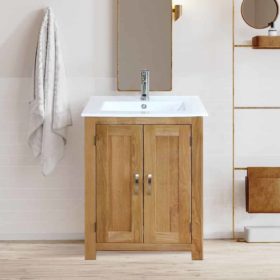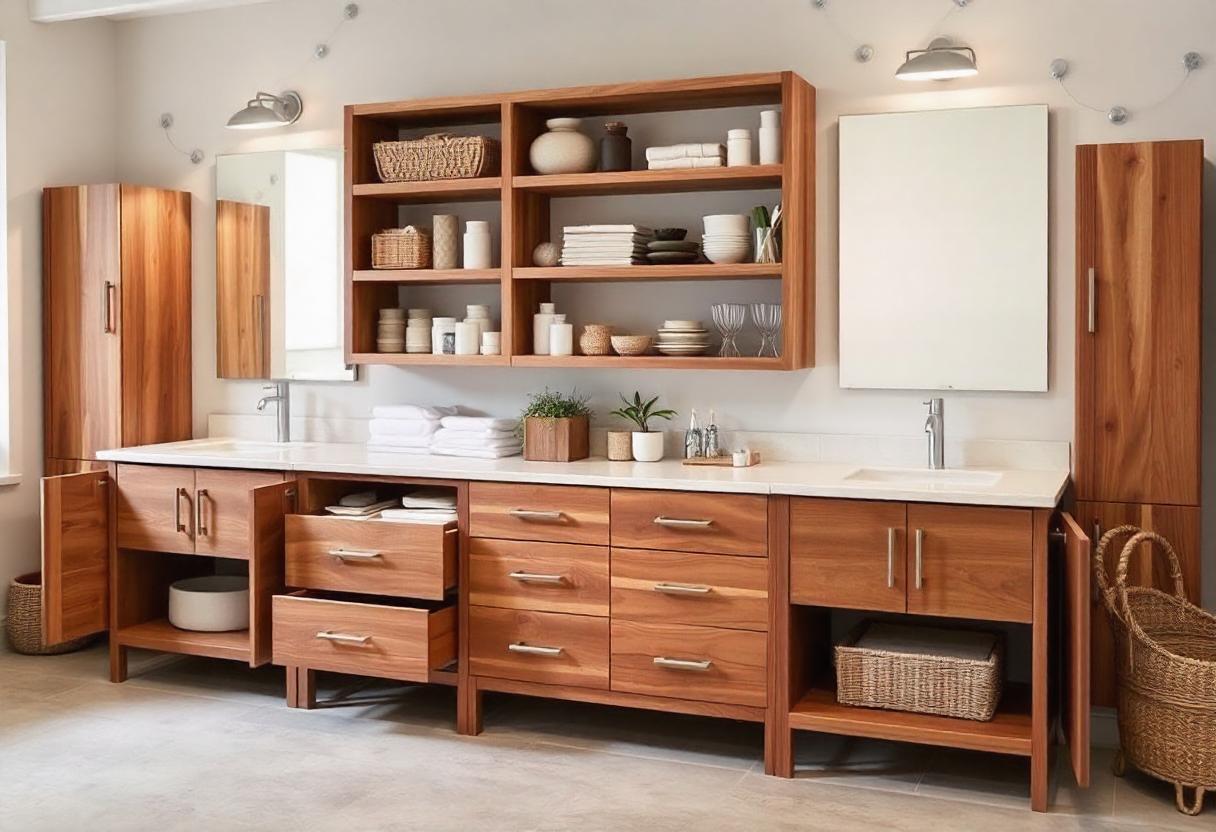Things to Consider when picking your Bathroom Vanity Unit
by bamstore
Are you tired of having a drab and outdated bathroom? Perhaps you’ve been meaning to get around to refurbishing it for months now and have never seemed to be able to find the time.
Whatever the case, often, a fresh lick of paint and a new vanity unit is all you need to bring it back to life. If you don’t want to spend thousands upon thousands of pounds gutting your bathroom and starting from scratch, simply replacing some of the old vanities might be just the solution that you’ve been looking for.
That said, how do you pick the perfect vanity unit for you? In this article, we’re going to take you through some things to consider before choosing your ideal bathroom vanity unit.
1. Consider the Bathroom Size and Layout
Before you do anything, first you need to understand how much floor-space you have available to play with. The last thing you need is to rush in and buy a vanity unit that looks the part, only to find that you can’t fit it comfortably into your bathroom! Or that in doing so, you are left feeling squashed and uncomfortable every time you want to sit down and use the toilet.
The size and layout of your bathroom play a crucial role in determining the appropriate vanity unit. Consider these points:
- Measure your available space carefully, accounting for door swings and traffic flow.
- For smaller bathrooms, consider wall-mounted or corner vanities to maximize floor space.
In larger bathrooms, you might opt for double vanities or longer units with more counter space.
2. Choosing the Right Size of the vanity
Choosing the right size for your bathroom vanity is a critical step in ensuring both functionality and visual appeal. Begin by carefully measuring your bathroom space, accounting for door swings, shower enclosures, and necessary clearance for comfortable movement.
Standard vanity dimensions typically range from 30-32 inches in height, 20-21 inches in depth, and 24-72 inches in width, but these can be adjusted based on specific needs. Consider the height of the primary users; while standard heights work well for most, taller individuals may prefer custom heights to avoid discomfort.
For shared bathrooms, wider vanities or double sinks might be necessary, with single vanities usually ranging from 24-48 inches wide and double vanities spanning 60-72 inches.
3. Assessing Storage Needs
When choosing a bathroom vanity, carefully evaluate your storage requirements. Consider the volume of toiletries, towels, and bathroom essentials you need to accommodate. Look for vanities with a mix of drawers, shelves, and cabinets to organize various items efficiently. Don’t forget to account for future needs or seasonal storage. A well-planned vanity can significantly reduce clutter and improve your bathroom’s functionality, making your daily routine smoother and more enjoyable.
4. Plumbing Considerations
Plumbing plays a crucial role in vanity selection and installation. Assess your existing plumbing layout and determine if it’s compatible with your desired vanity. Consider the location of water supply lines, drain pipes, and shut-off valves. Some vanities may require plumbing modifications, which can impact your budget and installation timeline. If you’re replacing an old vanity, measure the distance between the wall and the drain to ensure proper fit. For new installations, consult a plumber to determine the most efficient layout that complies with local building codes.
5. Materials for Durability and Maintenance
Choosing the right materials for your bathroom vanity is essential for longevity and ease of maintenance. Opt for moisture-resistant options that can withstand high humidity levels. Solid wood, marine-grade plywood, or high-quality MDF with water-resistant finishes are excellent choices. For countertops, materials like quartz, granite, or solid surface offer durability and low maintenance. Consider the finish of your vanity as well; lacquers or varnishes can provide additional protection against moisture. Remember, the right materials will not only ensure your vanity’s longevity but also influence its aesthetics and overall bathroom design.
6. Determine the Budget for Your Vanity
Vanity prices can vary significantly based on size, materials, brand, and features. Consider not just the cost of the vanity itself, but also associated expenses such as countertops, sinks, faucets, and potential plumbing modifications. If you’re working with a tight budget, explore stock options from home improvement stores or online retailers. For more flexibility in design and materials, custom or semi-custom vanities might be worth the investment. Don’t forget to factor in installation costs if you’re not planning a DIY approach. A well-planned budget ensures you get the best value without compromising on quality or functionality.
7. Installation Considerations
When selecting a bathroom vanity, think carefully about the installation process. Determine whether you’ll tackle it as a DIY project or hire a professional. Consider the complexity of the installation, which can vary based on your chosen vanity style and any necessary plumbing modifications. Freestanding vanities are generally easier to install, while wall-mounted options may require additional structural support. If you’re replacing an existing vanity, factor in the removal and disposal of the old unit. For new constructions or major renovations, coordinate the vanity installation with other bathroom elements like flooring and lighting. Proper installation is crucial for both functionality and longevity, so don’t hesitate to seek professional help if you’re unsure about any aspect of the process.
8. Matching Your Bathroom Style
Consider the existing or planned style of your bathroom – whether it’s modern, traditional, rustic, or eclectic. A contemporary bathroom might benefit from a sleek, minimalist vanity with clean lines, while a traditional space could call for a more ornate design with detailed woodwork. Pay attention to the vanity’s hardware, such as knobs and handles, as these small details can significantly impact the overall look. If you’re doing a complete bathroom remodel, the vanity can serve as a focal point to anchor your design choices. For a cohesive look, ensure your vanity style aligns with other bathroom fixtures like your tub, shower, and lighting.
9. Consider the Color Schemes
The color of your vanity plays a crucial role in your bathroom’s overall aesthetic. Consider how it will interact with your existing or planned color palette. A vanity can either blend seamlessly with your bathroom’s colors or serve as a striking contrast. Light-colored vanities can make a small bathroom feel more spacious, while darker tones can add warmth and sophistication to larger spaces.
10. Hiding or Tidying Exposed Pipework
Addressing exposed pipework is an often overlooked but important aspect of vanity selection and installation. Visible pipes can detract from your bathroom’s aesthetic appeal. Look for vanities designed with plumbing concealment in mind, featuring strategically placed panels or false drawer fronts. For pedestal or wall-mounted sinks, consider adding a skirt or small cabinet to hide pipes. If concealment isn’t possible, explore decorative options like chrome-plated pipes or custom-painted pipework that can turn functional elements into design features. In some cases, rerouting plumbing might be necessary to achieve a cleaner look. By thoughtfully addressing exposed pipework, you can maintain a polished, cohesive appearance in your bathroom while ensuring easy access for future maintenance.
























